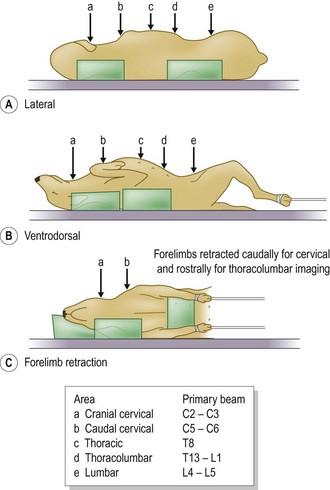42 UMN
Spinal fracture
CASE WORK-UP
Radiography
Positioning must reflect the neuroanatomical diagnosis (Fig. 42.1). Trauma, infection and neoplasia may produce multifocal lesions which require the whole spine to be radiographed. Assess changes in vertebral shape, density, alignment and surrounding soft tissues. Always check the dorsal articular facets as these will remain fractured even if vertebral bodies realign after the trauma (Fig. 42.2 and see Table 42.1).
Stay updated, free articles. Join our Telegram channel

Full access? Get Clinical Tree



